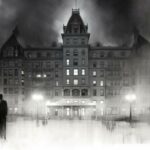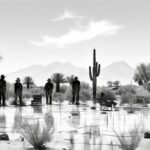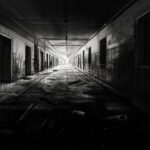Table of Contents
Philadelphia beckons with its storied past, where echoes of colonial spirits and haunting legends permeate its historic streets. This city, steeped in the annals of American history, also harbors some of the most harrowing haunts in the nation. Thrill-seekers and history buffs alike will find a chilling array of spectral sites to explore, from the ominous walls of old prisons to the ghostly whispers in ancient alleyways.
If you are doing any kind of paranormal investigation here, you might want to take a look at our ghost hunting equipment list. Locations like this get a reputation because they are high activity and you don’t need much to see for yourself.
The Bellevue Hotel
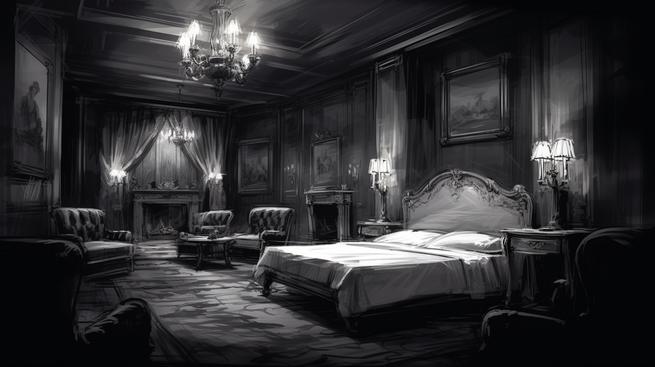
The Bellevue Hotel in Philadelphia stands as a beacon of the city’s rich history and ghostly tales. Erected in the heart of the city at the corner of Broad and Walnut Street, this architectural gem embodies the essence of the French Renaissance style. The hotel, initially named the Bellevue-Stratford, was the brainchild of George Boldt, whose vision was to bring a touch of Waldorf-Astoria’s grandeur to Philadelphia.
With a history that stretches back over a hundred years, the Bellevue Hotel has more to offer than just luxurious accommodations; it’s a treasure trove of stories from a bygone era. The hotel’s walls, if they could talk, would recount tales of every U.S. President from Theodore Roosevelt to Ronald Reagan resting their heads within its opulent rooms. It’s a hotel that’s seen its fair share of history, making its mark as the only hotel in the city recognized by the National Register of Historic Places.
But the Bellevue’s legacy is not solely grounded in its illustrious past. It’s the hotel’s haunted reputation that sends shivers down the spines of guests and onlookers alike. Tales of ghostly encounters are as much a part of the hotel’s fabric as the fine threads of its luxurious bed linens. Guests often report chilling experiences, from sudden drops in temperature to the eerie sensation of invisible hands tugging at their covers in the dead of night. Some have even felt the ghostly fingers of the unseen playfully teasing their toes, bringing childhood fears of the boogeyman to life.
Certain rooms seem to be hotspots for these spectral shenanigans. The hotel staff might know which ones, but they keep those cards close to their chest, inviting the brave to discover the mysteries for themselves. For those sensitive to otherworldly energies, walking into some rooms might feel like stepping into a pool of intense, paralyzing stillness, as if unseen eyes are watching your every move.
Despite these spooky encounters, the spirits of the Bellevue are said to embody the City of Brotherly Love’s friendly spirit. They’re not there to harm, only to remind guests that they share the space with history’s lingering presence.
Beyond the ghostly experiences, the Bellevue Hotel’s allure also lies in its commitment to providing an exceptional experience to all who pass through its doors. The intention set forth by George Boldt continues to this day, with the hotel boasting a 4-Star rating, 172 rooms, and amenities that cater to every need—from a fitness center to a 24-hour business center. Staying at the Bellevue means wrapping yourself in luxury, history, and maybe even a ghost story or two.
For those looking to delve deeper into Philadelphia’s haunted history, Ghost City Tours offers a window into the past with their Philadelphia Ghost Tours. An exploration with them promises to be a journey filled with eerie tales and hair-raising encounters at some of the city’s most famously haunted locales.
The Bellevue Hotel, now known as The Bellevue Hotel by Hyatt, is more than just a place to lay your head. It’s an experience steeped in history, luxury, and the supernatural. Whether you’re there for the ghosts or the grandeur, the Bellevue Hotel promises an unforgettable stay.
I stayed at the Bellevue Hotel and felt a chill run down my spine when my blanket got tugged at night, even though no one else was in the room! It was like the old tales were coming to life and someone unseen was trying to say hello.
Haunted Washington Square
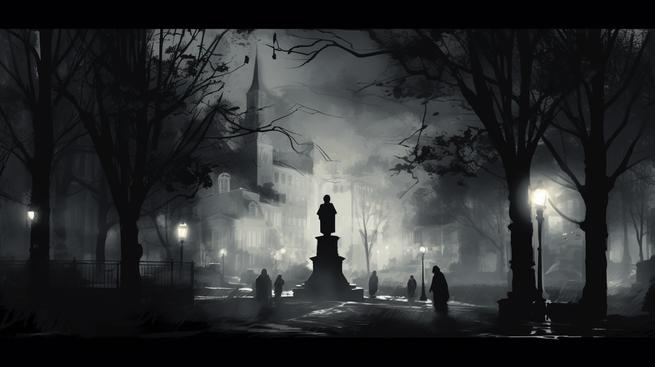
Washington Square in Philadelphia wears a cloak of haunted history, with its past echoing through the modern-day park. A green oasis in the heart of the city, this public space is held within the embrace of the original five squares laid out by William Penn. However, beneath its tranquil exterior lies a spine-chilling legacy as a former potter’s field and the final resting place for countless souls.
From 1704 to 1794, what was then known as Southeast Square became a repository for the city’s poor, foreigners, and those denied a Christian burial. These unfortunates were interred with only canvas for a shroud, their graves unmarked and forgotten. The sheer number of burials here has left an indelible mark on the square, making it a hotbed for ghostly sightings and paranormal activity.
One of the most prominent specters is Leah’s Ghost, a Quaker woman who, during her lifetime, fiercely guarded the burial ground from grave robbers. Leah’s vigilant spirit is rumored to persist, her lantern light occasionally glimpsed by visitors who also report feeling an unseen presence following them through the park.
The heart of Washington Square holds the Tomb of an Unknown Revolutionary War Soldier, a monument to those who fought and died for American independence. During the Revolutionary War, the square transformed into a mass grave for soldiers and prisoners of war who succumbed to the brutal conditions. Their anonymous burials are said to contribute to the square’s supernatural disturbances, with full-bodied apparitions and whispers from the past reported by witnesses.
The spirits of those struck down by the 1793 Yellow Fever Epidemic also haunt the square. With thousands dead, burial pits were hastily dug to contain the epidemic’s toll. Today, some visitors claim feelings of sudden illness, a phenomenon believed to be the spectral legacy of the epidemic’s victims reaching out from their mass graves.
Despite its ghostly reputation, Washington Square remains a beloved part of Philadelphia, serving as a reminder that the ground we walk on is steeped in history. For those brave enough to seek the company of the past, the square’s gates stand open, inviting the living to explore its haunted ground. Ghost City Tours offers curious souls the chance to delve into these stories and come face to face with Philadelphia’s most enduring spirits.
I was chilling in Washington Square one evening when I swear I saw a flickering lantern out of the corner of my eye. It had to be Leah’s ghost, still keeping watch over the place.
The Haunted Elfreth’S Alley
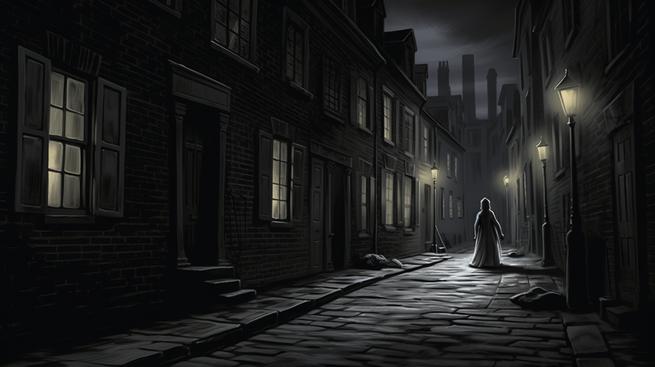
Elfreth’s Alley, known as the nation’s oldest residential street, has its roots deeply embedded in the cobblestones of Philadelphia’s rich history. Dating back to 1702, this storied street has seen more than its fair share of the American narrative unfold along its narrow passage. It’s no wonder that it’s become a magnet for ghost hunters and history enthusiasts alike.
The alley’s homes, a veritable patchwork of colonial architecture, have stood the test of time, bearing witness to generations of residents. Each brick and windowpane tells a tale, and if walls could talk, the stories they would whisper of bygone eras could fill volumes.
As dusk falls on Elfreth’s Alley, a hush descends, and the echoes of the past begin to stir. It’s said that spirits from the 18th and 19th centuries linger, perhaps attached to the very buildings they once inhabited. Visitors and guides alike recount tales of phantom footsteps, eerie sensations, and apparitions seen in the windows or flitting through the gardens.
One cannot walk the alley without feeling the weight of history upon their shoulders. The stories of the spectral residents are as varied as their living counterparts were. Some speak of a colonial dressmaker, her spirit still plying her trade long after her hands have turned to dust. Others tell of a Revolutionary War soldier, his presence a reminder of the alley’s role in the birth of a nation.
For those who dare to tread the cobbled path at night, Elfreth’s Alley transforms. The quaint charm of the daytime gives way to a spine-chilling atmosphere where every shadow could conceal a ghostly inhabitant. The allure of the unknown draws the curious to explore the nooks and crannies, seeking an encounter with the otherworldly.
In Elfreth’s Alley, the past is never truly gone. It lingers, waiting to be rediscovered by those who seek to unearth its secrets. The alley’s haunted reputation is a badge of honor, a testament to the lives that have shaped it and the memories that refuse to fade away.
I was walking down Elfreth’s Alley when I heard footsteps behind me, but when I turned around, nobody was there – gave me the heebie-jeebies! Then, just as I was about to bolt, I caught a glimpse of a lady in colonial dress vanish right through a closed door.
The Haunted Fort Mifflin

Commissioned in 1771, Fort Mifflin stands as a sentinel to Philadelphia’s past, steeped in tales of the supernatural. This historic battlefield saw hundreds of Revolutionary War soldiers fall during combat, and later, during the Civil War, it served as a dark prison where thousands of soldiers languished from disease and starvation. These tragic events have led many to believe that Fort Mifflin is one of the most haunted places in America, with an atmosphere thick with the echoes of its macabre history.
Paranormal investigators and staff at the museum fuel the fire of these ghostly rumors. They claim that hauntings occur throughout the fort, with apparitions and disembodied voices making themselves known at all hours. Visitors often report sightings of spectral soldiers and the chilling sounds of a screaming woman piercing the air. Some have even experienced the unnerving sensation of being touched by unseen hands, adding to the fort’s eerie reputation.
The legend of the Faceless Man particularly sends shivers down the spine. Believed to be the ghost of William H. Howe, a Civil War soldier executed at the fort, his spirit is said to roam the grounds in his military garb. However, the real story of Howe is more tragic than treacherous. Stricken with dysentery and wrongfully executed for murder, his life ended in misfortune, rather than malevolence.
The history of Fort Mifflin is a tapestry of sacrifice and survival. During the Revolutionary War, soldiers held off the British fleet, allowing American forces to escape and regroup. Many gave their lives in the process, setting the fort ablaze to avoid capture. Rebuilt under President John Adams’s orders, the fort later endured as a military prison during the Civil War, where unspeakable conditions led to the deaths of countless prisoners.
Today, Fort Mifflin serves as a monument to its storied past, offering tours, historical reenactments, and paranormal investigations to the public. Those brave enough can even partake in overnight ghost hunts, attempting to unravel the mysteries that linger within its walls.
Visitors to Philadelphia’s only remaining Revolutionary War battlefield are encouraged to share their supernatural experiences, adding to the lore of this historically haunted landmark. Whether one believes in ghosts or not, the weight of history is undeniable at Fort Mifflin, where the past is always present.
I was wandering through old Fort Mifflin when I heard the creepiest scream ever—it sounded like it was coming from nowhere and everywhere at once! And then, out of the corner of my eye, I swear I saw a soldier with no face, just standing there, before he vanished into thin air.
The Haunted Eastern State Penitentiary

The Eastern State Penitentiary in Philadelphia stands as a formidable fortress with a storied past that sends shivers down the spine. Constructed in 1829, it pioneered the concept of solitary confinement, which intended to inspire penitence, hence the term “penitentiary.” But this grand experiment in isolation soon turned into a recipe for psychological torment.
With its castle-like walls and foreboding structure, the penitentiary became the talk of the town, a place where society’s outcasts disappeared behind cold stone and iron bars. Inmates, cloaked in silence and cut off from human contact, often crossed the thin line between sanity and madness. The prison’s vaulted, sky-lit cells, which once held the hope of redemption, soon echoed with the ghosts of broken minds.
As years rolled by, the penitentiary’s reputation grew more sinister. Tales of ghastly apparitions and unearthly wails began to circulate among the locals. The prison’s very name became synonymous with dread, and it wasn’t long before it cemented its place in the annals of the haunted.
The penitentiary closed its doors in 1971, but its legacy of despair lingered. Today, it stands as a crumbling relic of a bygone era, its decayed cells and abandoned guard towers serving as eerie reminders of its troubled past. Visitors who walk its desolate corridors often report chilling encounters, suggesting that the spirits of its former residents may still be serving their eternal sentences.
The Haunted Eastern State Penitentiary now beckons the brave and the curious, inviting them to peer into the shadows of history. Whether seeking a thrill or a glimpse into the darker side of human nature, this haunting landmark continues to hold secrets as old as its walls and as deep as the fears it conjures.
I was wandering through the old cellblocks when I heard the sound of someone weeping, but when I turned around, nobody was there. It totally gave me the creeps, like I wasn’t alone.
The Haunted Bishop White House
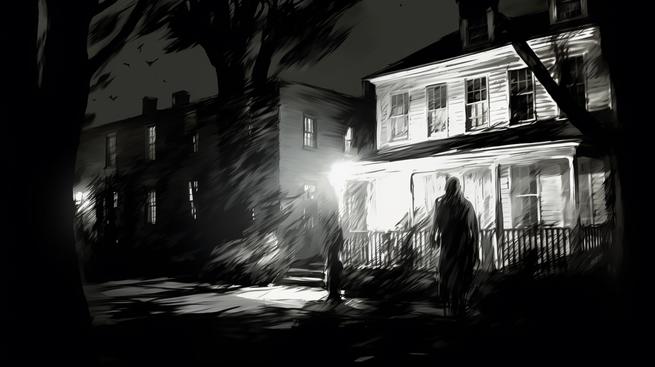
The Haunted Bishop White House in Philadelphia stands as a testament to the city’s rich past, where echoes of bygone eras linger in the air. Constructed in 1787, the residence became the abode of William White, the esteemed first consecrated Bishop of the Episcopal Church. This historic property, while appearing unremarkable by day, transforms into a bastion of the paranormal once night falls.
One of the most gripping tales associated with the Bishop White House revolves around John, a free African-American and the trusted coachman for Bishop White. John’s dedication to his employer was unwavering, leading him to reside in a modest apartment just behind the grand estate. Tragically, John’s life was cut short by the Yellow Fever epidemic of 1793, with some speculating whether his demise was truly due to the disease or the harrowing treatments administered by Dr. Benjamin Rush. Regardless, John’s spirit seemingly found sanctuary within the walls of the house post-mortem. Visitors often report sightings of a shadowy figure darting across rooms, a specter believed to be John’s ghost. Yet, unlike the spine-chilling aura that typically accompanies “Shadow People,” John’s presence evokes a profound sense of sorrow.
Another spectral resident is Mrs. Boggs, the White family’s cook and a close confidant of John. Her spectral form is often spotted in the kitchen and the first floor, locations where she spent much of her time during her tenure with the Whites.
The spirit of Bishop White himself is said to be part of the house’s ghostly roster. Many claim his apparition gazes out from the third-floor windows, his expression laden with sadness—a reminder of the man who left an indelible mark on Philadelphia’s spiritual community.
Adding an element of the peculiar to the haunted history is the tale of a ghost cat, allegedly a former pet of Dr. Benjamin Rush. This feline phantom is seen napping by the windows, puzzling passersby since no living cats reside in the home, nor were they documented as part of the household in historical records.
The Bishop White House, now managed by the Historic Burying Grounds Initiative, preserves not only the tangible artifacts of the Bishop and his family but also the intangible whispers of its former inhabitants. The property, which once welcomed the likes of George Washington and Benjamin Franklin, now invites guests to explore its storied rooms and perhaps encounter its eternal residents.
Visitors eager to delve into the haunted history of Philadelphia can include the Bishop White House on their ghostly itinerary, with tours available through the Independence National Historical Park. For those looking to peer beyond the veil, the house stands as a beacon, drawing in the curious and offering a glimpse into the spectral side of the City of Brotherly Love.
I heard that back in the day, the Bishop White House in Philly became home to some ghosts, like John the coachman who got taken by Yellow Fever, and now folks say they see his shadow zipping around at night. Even the old cook, Mrs. Boggs, is still hanging out in the kitchen, and some say Bishop White himself looks out the windows, all sad-like.
The Ghosts In The First Bank Of United States

The First Bank of the United States in Philadelphia holds a treasure trove of spectral tales that chill the bones of locals and visitors alike. This historic edifice, now shuttered for over four decades, whispers secrets of its ghostly inhabitants, with the most prominent phantom being none other than Alexander Hamilton. According to local lore, Hamilton’s spirit cannot find peace, as it reportedly paces the hallways with the weight of past scandals and unresolved guilt.
Built in 1795, the First Bank came to life through a contentious decision, igniting a fierce debate among the Founding Fathers. The clash of ideologies set the stage for a legacy that would extend beyond the grave. The bank’s very creation, spearheaded by Hamilton, was a bold move to untangle the young nation from the knots of debt. The financial stronghold stood as a testament to the fledgling country’s growing pains and the push-and-pull between federalist and anti-federalist forces.
Hamilton’s tenure was marred by personal and public controversy. His affair with Maria Reynolds and the subsequent blackmail left his reputation in tatters. The duel with Aaron Burr, which cost him his life, seemed to be the tragic crescendo of his stormy career. Even in death, Hamilton’s story did not end, as his widow Eliza faced a life of hardship.
The bank’s narrative intertwines with that of Stephen Girard, the richest man in America at the time, whose fortune was closely linked to the institution. His investment rescued the bank when Congress voted to abandon it, and his lending hand to the government during the War of 1812 was a lifeline for the nation. Girard’s own demise was as dramatic as the history he helped shape, meeting an untimely end after a street accident.
Today, the First Bank stands silent, its future uncertain, under the stewardship of the National Parks Service. It serves as a backdrop for tales of drained batteries and eerie photographs, fueling speculation about the spectral energy within its walls. Ghost enthusiasts and history buffs alike hope for the building’s rebirth as a museum that would honor Hamilton and perhaps stir even more ghostly encounters.
For those brave enough to explore the shadows of Philadelphia’s past, Ghost City Tours offers a glimpse into the haunted heart of the city, where the First Bank of the United States holds its ground as a beacon of both historical significance and otherworldly intrigue.
I heard that the ghost of Alexander Hamilton is still hanging around the old First Bank in Philly, pacing the halls and making folks feel all sorts of spooky vibes when they get close. Some say he can’t rest because of his old scandals and that duel that ended it all.





